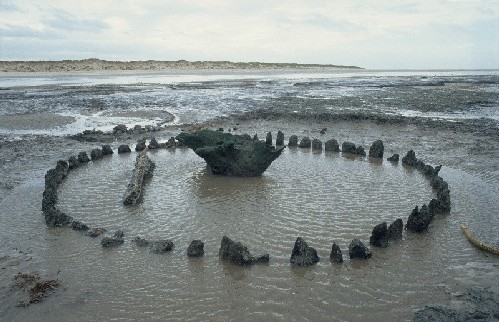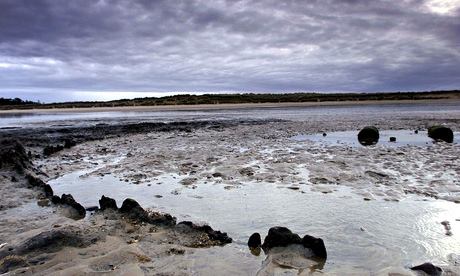Both sites have been eroded with seawater during the many many centuries that have passed, but archaeologists believe the two circles, which originally stood inland in boggy freshwater, were part of the same monumental complex connected with rites to honour the dead.
Archaeologists have said that, unlike the giant boulders of monuments such as Stonehenge, the only evidence for most 'prehistoric timber structures is post holes in the ground.' However, because the salty silt preserved the wood, the two circles at Holme Beach are the only ones in Britain to have been dated precisely to the year 2049 BC.
"As the timbers used in both timber circles were felled at the same time, the construction of the two monuments must have been directly linked. Seahenge is thought to have been a free-standing timber circle, possibly to mark the death of an individual, acting as a cenotaph symbolising death rather than a location for burial. If part of a burial mound, the second circle would have been the actual burial place. The inevitable destruction of the monument will be monitored, but there are no plans for further excavation."



 RSS Feed
RSS Feed
